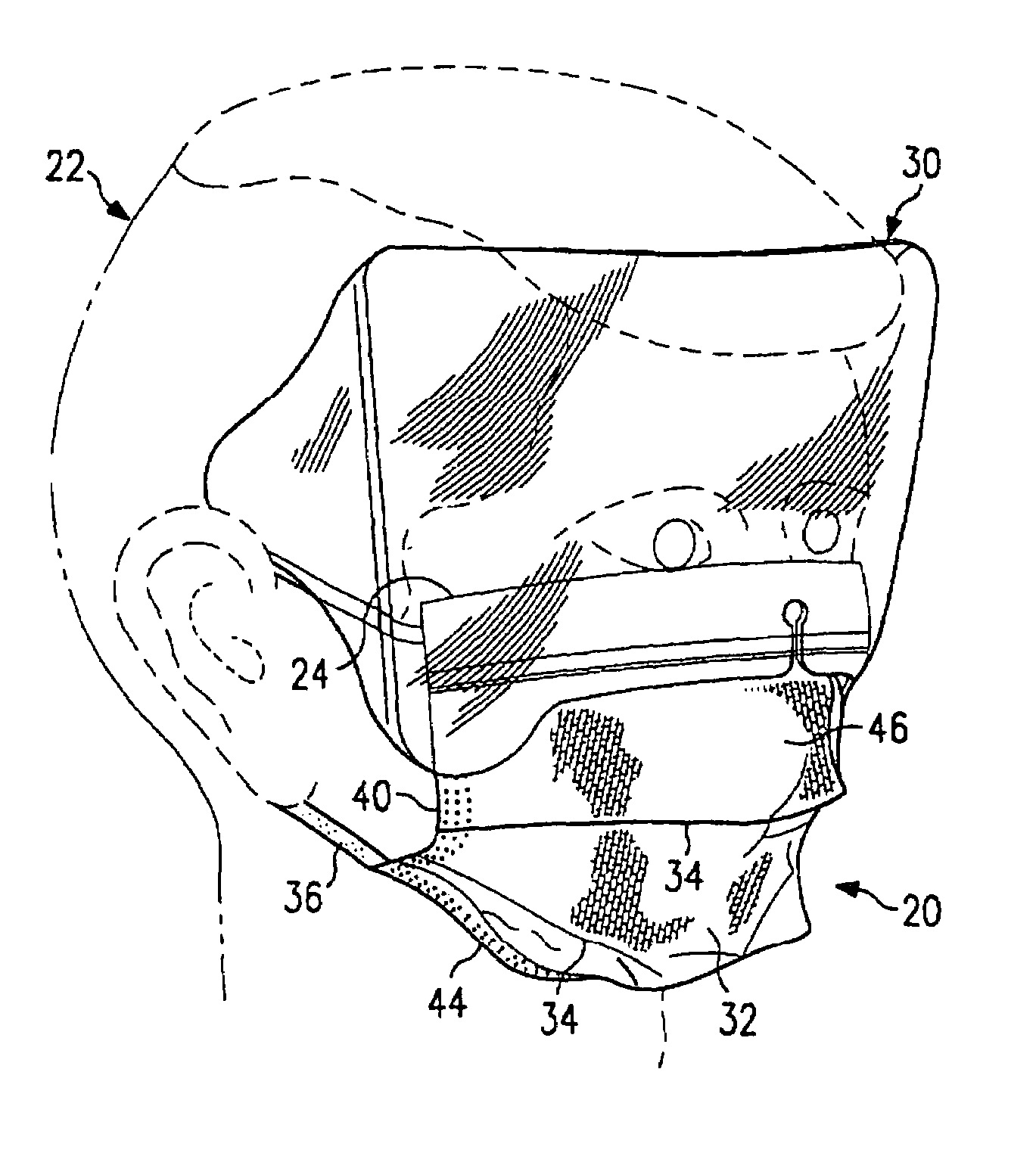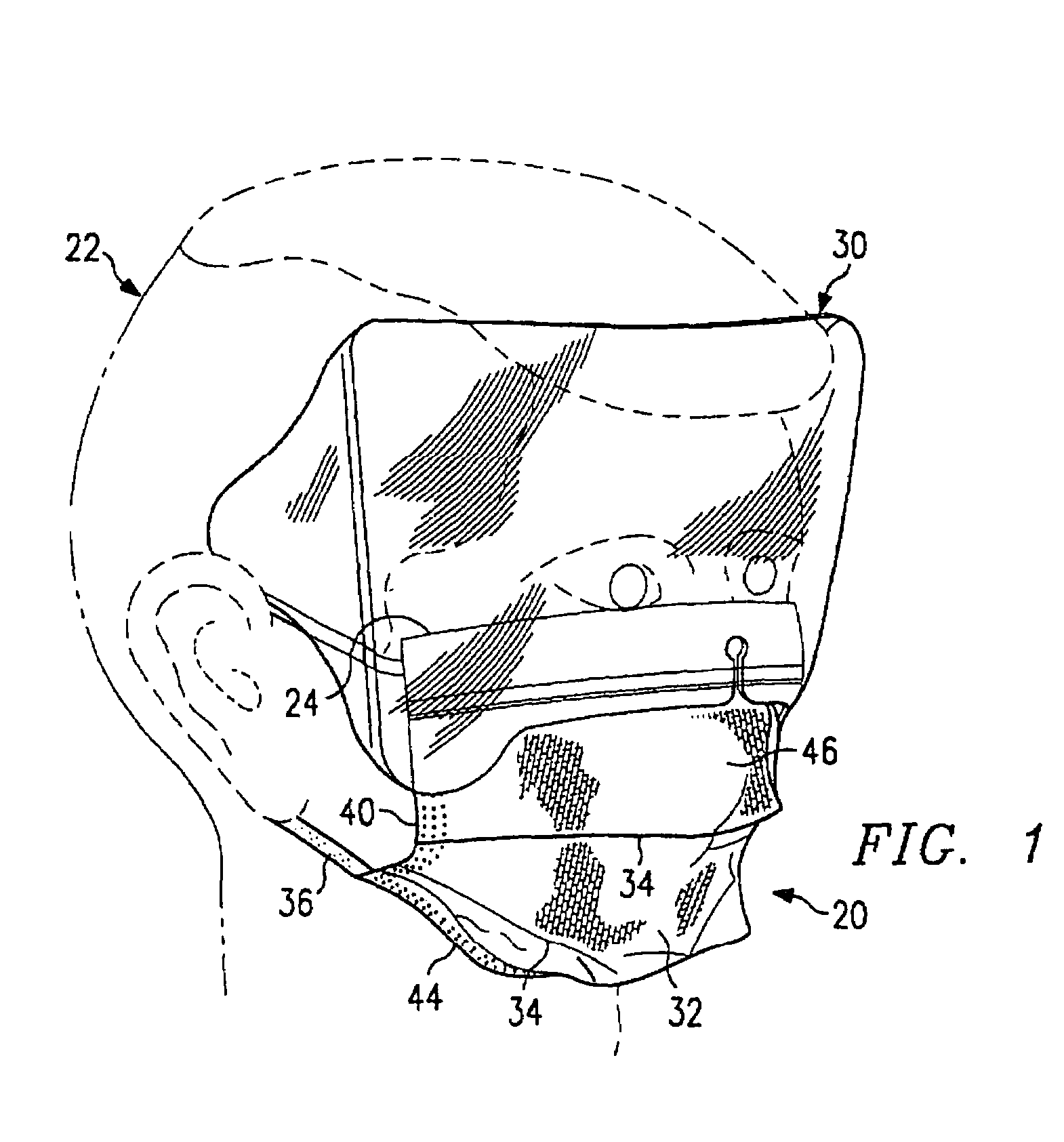Facemasks containing an anti-fog / anti-glare composition
a composition and anti-glare technology, applied in the field of face masks containing anti-fog/anti-glare compositions, can solve the problems of glare, failure to solve the problem of glare, and undesirable specular reflection of glar
- Summary
- Abstract
- Description
- Claims
- Application Information
AI Technical Summary
Benefits of technology
Problems solved by technology
Method used
Image
Examples
example 1
[0043]The ability to inhibit fogging and glare with a coating composition of the present invention was demonstrated. Coating compositions were formed from a variety of different water-soluble organic polymers. One such water-soluble organic polymer was Bermocoll E 230FQ, which is ethyl hydroxyethyl cellulose commercially available from Akzo Nobel of Stamford Conn. Another water-soluble organic polymer was Hydagen CMF, which is chitosan glycolate commercially available from Cognis Corporation of Ambler, Pa. Another water-soluble organic polymer was Crodacel QM, which is PG-hydroxyethyl cellulose cocodimonium, a quaternary ammonium cellulose salt available from Croda, soluble Inc. of Parsipany, N.J. Finally, the other water-soluble organic polymer was Klucel EF, which is hydroxypropyl cellulose commercially available from Hercules, Inc. of Wilmington, Del.
[0044]The active percentage of the ingredients within each coating composition (the balance in each sample being water) is set fort...
PUM
| Property | Measurement | Unit |
|---|---|---|
| thickness | aaaaa | aaaaa |
| wt. % | aaaaa | aaaaa |
| wt. % | aaaaa | aaaaa |
Abstract
Description
Claims
Application Information
 Login to View More
Login to View More - R&D
- Intellectual Property
- Life Sciences
- Materials
- Tech Scout
- Unparalleled Data Quality
- Higher Quality Content
- 60% Fewer Hallucinations
Browse by: Latest US Patents, China's latest patents, Technical Efficacy Thesaurus, Application Domain, Technology Topic, Popular Technical Reports.
© 2025 PatSnap. All rights reserved.Legal|Privacy policy|Modern Slavery Act Transparency Statement|Sitemap|About US| Contact US: help@patsnap.com


